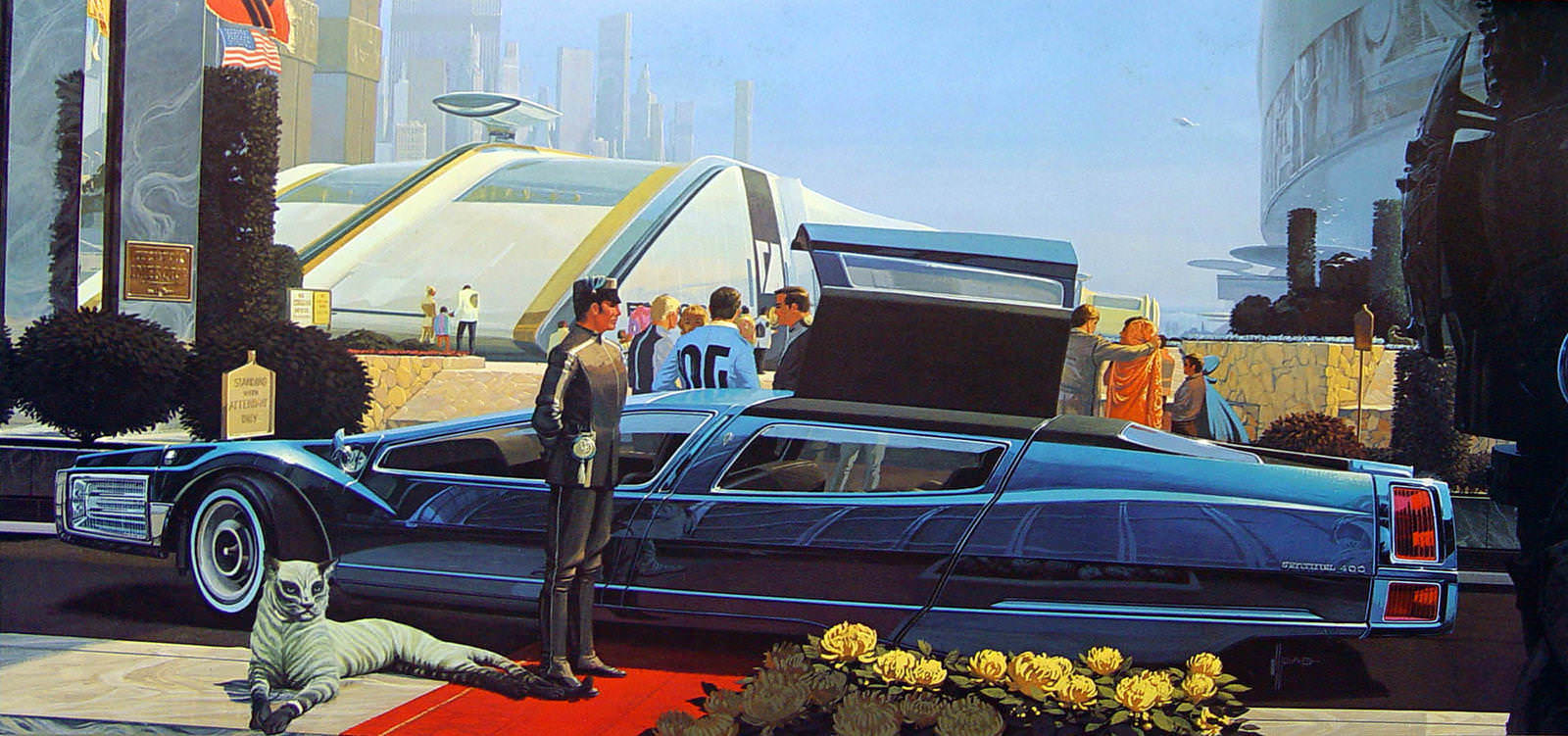Although interesting to look at, Town Sedans sold poorly, even by the Airflow's underperforming standards (compared to expectations). Only 354 were made during model years 1934 and 1935, 43 in the latter year. There were 195 Chrysler Town Sedans total, and 159 DeSotos. As noted below, very few seem to have survived.
Below are some images of Airflow Town Sedans.
1934 Chrysler CU Airflow Sedan - publicity photo
A standard Chrysler Airflow 4-door sedan.
Another perspective, taken at an auto show.
1934 DeSoto SE Town Sedan - publicity
Apologies for the poor quality, but I had to scan this from a reference book. I include it because the car is unobstructed. DeSoto Airflows had comparatively short wheelbases that translated into stubby looking front ends. That said, the broad C-pillar zone made for a curiously interesting design.
Publicity photo used perhaps for advertisements or brochures.
Brochure image: a flipped version of the photo shown in the previous image. The steering wheel in the previous image looks like it was painted by a retouch artist. So this is probably the original photo.
1934 Chrysler CU Airflow Town Sedan - car-for-sale photos
This is the only CU Town Sedan I found on the Internet. I did see a 1935 DeSoto Town Sedan, but it had been customized. The only other was a long '34 CX Imperial LeBaron. It's possible that a very few other Town Sedans exist.
Despite the design's interesting appearance, the limited outside view for back seat passengers might have hindered sales. Chrysler Town Sedans were priced the same as regular sedans, and DeSoto Town Sedans were trivially cheaper than six-window sedans for 1934 and trivially more expensive in 1935. So price was not a sales volume factor.
Even on the longer (by 7.5 inches, 190 mm) than DeSoto wheelbase on the Chrysler CU, the covered side window area makes the Town Sedan seem more stubby than mainline Airflow 4-door sedan. Compare this car to the one in the image below.
1934 Chrysler CU Airflow Sedan - car-for-sale photo
This shows the aft side window that was blanked-over to create Town Sedans.












%20-%20front.png)
%20-%20left%20front%2023.png)
%20-%20left%20side.png)
%20-%20high%20left%20rear%2016.png)
%20-%20rear.png)
%20-%20right%20rear%2014.png)
%20-%20right%20side.png)
%20-%20right%20front%2023.png)
%20-%20cockpit.png)
%20-%20passenger%20compartment.png)


































